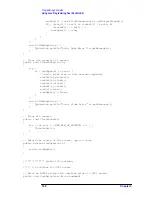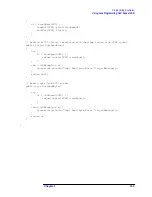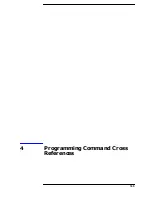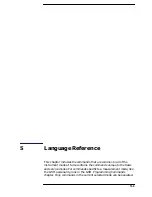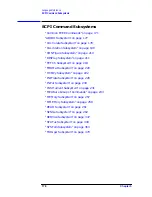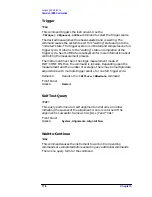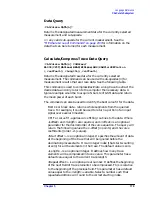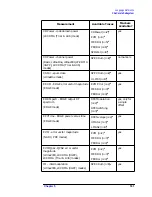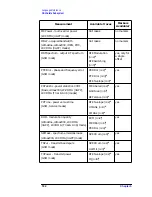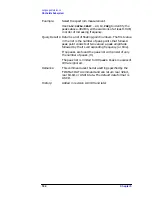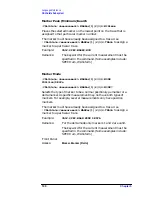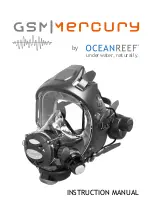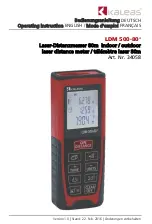
176
Chapter 5
Language Reference
Common IEEE Commands
Trigger
*TRG
This command triggers the instrument. Use the
:TRIGger[:SEQuence]:SOURce
command to select the trigger source.
The desired measurement has been selected and is waiting. The
command causes the system to exit this “waiting” state and go to the
“initiated” state. The trigger system is initiated and completes one full
trigger cycle. It returns to the “waiting” state on completion of the
trigger cycle. See the MEASure subsystem for more information about
controlling the measurement process.
The instrument must be in the single measurement mode. If
INIT:CONT ON, then the command is ignored. Depending upon the
measurement and the number of averages, there may be multiple data
acquisitions, with multiple trigger events, for one full trigger cycle.
Remarks:
See also the
:INITiate:IMMediate
command
Front Panel
Access:
Restart
Self Test Query
*TST?
This query performs a full self alignment and returns a number
indicating the success of the alignment. A zero is returned if the
alignment is successful. Same as CAL[:ALL]? and *CAL?
Front Panel
Access:
System, Alignments, Align All Now
Wait-to-Continue
*WAI
This command causes the instrument to wait until all pending
commands are completed before executing any additional commands.
There is no query form for the command.
Summary of Contents for E4406A VSA Series
Page 4: ...4 ...
Page 59: ...59 2 Programming Fundamentals ...
Page 124: ...124 Chapter2 Programming Fundamentals Using the LAN to Control the Analyzer ...
Page 125: ...125 3 Programming Examples ...
Page 164: ...164 Chapter3 Programming Examples Using Java Programming Over Socket LAN ...
Page 165: ...165 4 Programming Command Cross References ...
Page 379: ...379 6 Error Messages ...
Page 412: ...412 Chapter6 Error Messages Error Message Descriptions ...

